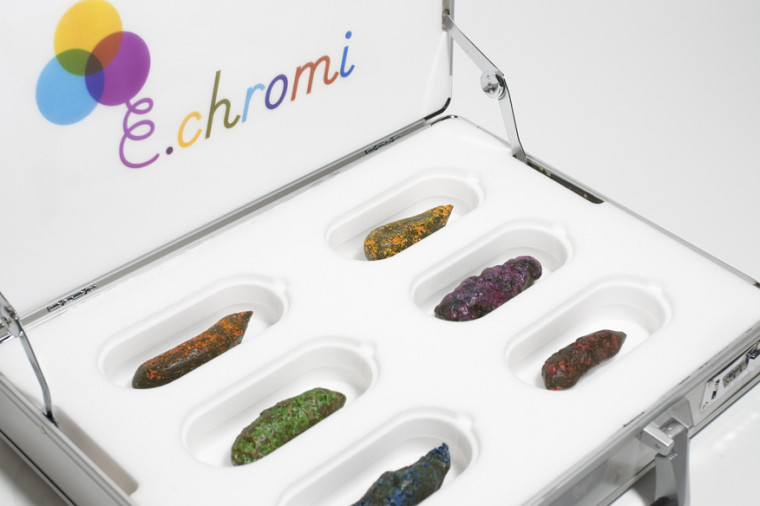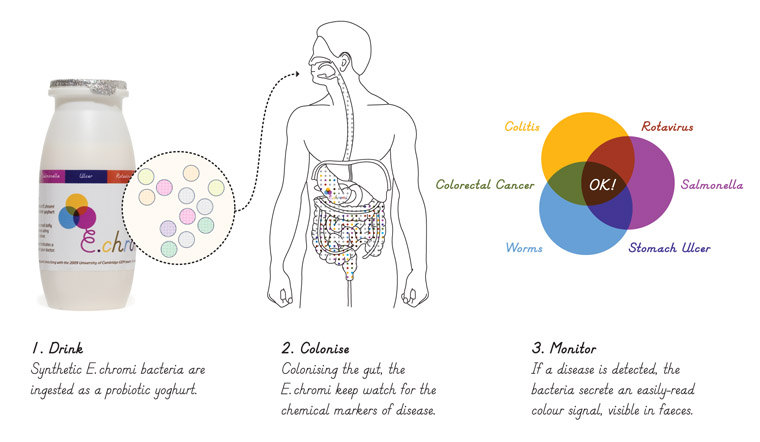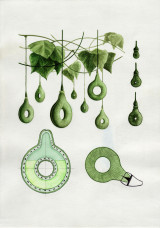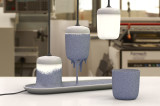To develop a self-diagnostic medical tool kit
E. chromi

Alexandra Daisy Ginsberg, James King, iGEM Cambridge team 2009
E. chromi is a collaboration between designers and scientists in the new field of synthetic biology. In 2009, seven Cambridge University undergraduates spent the summer genetically engineering bacteria to secrete a variety of coloured pigments, visible to the naked eye. They designed standardised sequences of DNA, known as BioBricks, and inserted them into E. coli bacteria. Each BioBrick part contains genes selected from existing organisms, enabling the bacteria to produce a range of colours: red, yellow, green, blue, brown or violet. By combining these with other BioBricks, bacteria could be programmed to do useful things, such as indicate whether drinking water is safe by turning red if they sense a toxin. E. chromi won the Grand Prize at the 2009 International Genetically Engineered Machine Competition (iGEM).

Designers Alexandra Daisy Ginsberg and James King worked with the team to explore the potential of this new technology, while it was being developed in the lab. They designed a timeline proposing ways that a foundational technology such as E. chromi could develop over the next century. These scenarios include food additives, patenting issues, personalised medicine, terrorism and new types of weather. Not necessarily desirable, they explore the different agendas that could shape the use of E. chromi and in turn, our everyday lives. This collaboration has meant that E. chromi is a technology that has been designed at both the genetic and the human scale, setting a precedent for future collaborations between designers and scientists.
Here, we feature the Scatalog: In 2039, cheap, personalised disease monitoring works from the inside out. Ingested as yoghurt, E. chromi colonise the gut. The bacteria keep watch for chemical markers of disease, producing an easy-to-read warning signals to prompt you to see your doctor.


